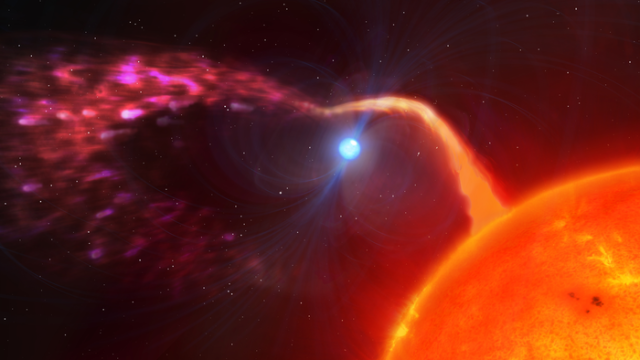Astronomers announced this week the discovery of the fastest-rotating white dwarf star on record, with a spin rate of once every 25 seconds. The star is about the size of Earth but, by the team’s measurements, contains least 200,000 times more mass, making the dense little object a spinning freak of nature.
The star is named “LAMOST J024048.51+195226.9,” or J0240+1952 for short. White dwarfs are relatively cool, compact stars that are reaching the end of their lifetimes. (Our own Sun will become a white dwarf in about 5 billion years.) But this dwarf is tearing things up in its elder years, whirling with ferocious energy. A team of astrophysicists determined the star’s extreme spin rate and published their results in the Monthly Notice of the Royal Astronomical Society: Letters.
“J0240+1952 will have completed several rotations in the short amount of time that people take to read about it,” said Ingrid Pelisoli, an astrophysicist at the University of Warwick and lead author of the new paper, in a university press release. “The rotation is so fast that the white dwarf must have an above average mass just to stay together and not be torn apart.”
At first glance, it may not seem that wild. A big marble in space rotates every 25 seconds. But that marble is the size of our own planet, which takes 24 hours complete one rotation. Can you imagine if an Earth day was 25 seconds, day and night cycling rapidly across the sky? Positively dizzying.
J0240+1952 is rotating 20% faster than the previously known fastest-spinning white dwarf, according to the researchers. But what makes its rotation all the more interesting is its location, directly adjacent to a large companion star. J0240+1952’s gravitational pull siphons matter off the adjacent star, and its magnetic field propels that material away out into space, like an astrophysical jai alai.
That act makes J0240+1952 the second-ever discovered star that acts as a magnetic propeller, according to the team. “We now know it’s not a unique occurrence,” said Tom Marsh, a physicist at the University of Warwick, in the same release. “It establishes that the magnetic propeller mechanism is a generic property that operates in these binaries, if the circumstances are right.”
Marsh noted that this is a useful discovery because it provides another data point by which to understand these magnetic space catapults. From the original magnetic propeller star, researchers expected that the systems needed to have a fast-spinning star, and J0240+1952 adds some particularly extreme evidence for that hypothesis.
More: Astronomers Found an Ultra-Dense White Star the Size of Our Moon
Editor’s Note: Release dates within this article are based in the U.S., but will be updated with local Australian dates as soon as we know more.
